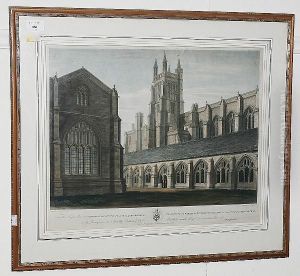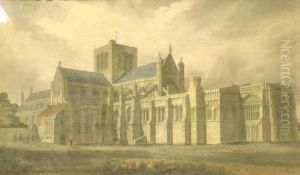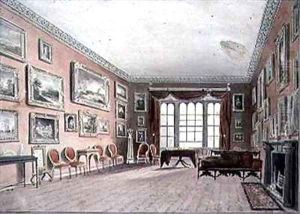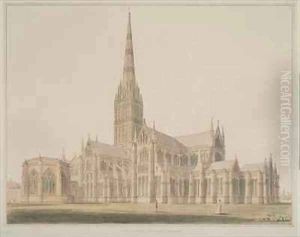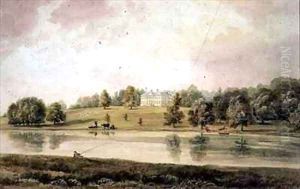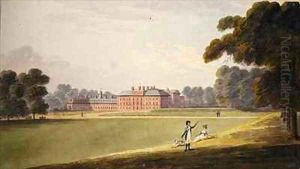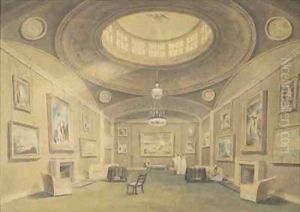John Buckler Paintings
John Buckler was an English artist and occasional architect who is best remembered for his drawings and watercolors of architectural subjects, particularly English churches and manors. His work is noted for its accuracy and attention to detail, making it a valuable historical record of many buildings, some of which have since been altered or destroyed.
Buckler was born in 1770 in Calbourne, Isle of Wight. He was the son of a yeoman, which was a status referring to a small landowner or a farmer of the middle class. Despite his non-aristocratic background, Buckler showed a keen interest in art and architecture from an early age. He moved to London, where he worked initially as a clerk at the Office of Land Revenue Records and Enrolments, a position that would have provided him with a stable income while he pursued his artistic interests.
While working as a clerk, Buckler began to draw and study buildings, honing his skills in architectural drawing. He became particularly adept at capturing the likeness of buildings in meticulous detail, a skill that would later define his artistic career. Buckler did not limit himself to English subjects; he also drew buildings from other parts of Europe, which he visited on several occasions.
His son, John Chessell Buckler, followed in his footsteps, becoming an architect and artist in his own right. Together, they produced a significant volume of work, documenting hundreds of historical buildings across England.
John Buckler's dedication to his craft earned him a number of distinguished clients, and he exhibited regularly at the Royal Academy from 1796 to 1838. His drawings and watercolors served not just as works of art but also as important documents for architectural historians and conservationists. Buckler's work provides a window into the past, offering insight into the architectural style and construction techniques of the period.
He passed away in 1851, leaving behind an extensive collection of drawings that continue to be studied and appreciated for their historical value and artistic merit. Although Buckler is not as widely known as some of his contemporaries, his contribution to the recording of England's architectural heritage is considered significant.

![View Of The North And West Front Of Sion [sic] House With The Kitchen](https://www.niceartgallery.com/imgs/445888/s/john-buckler-view-of-the-north-and-west-front-of-sion-sic-house-with-the-kitchen-2bdee50a.jpg)

